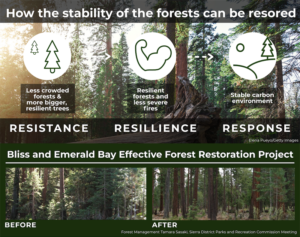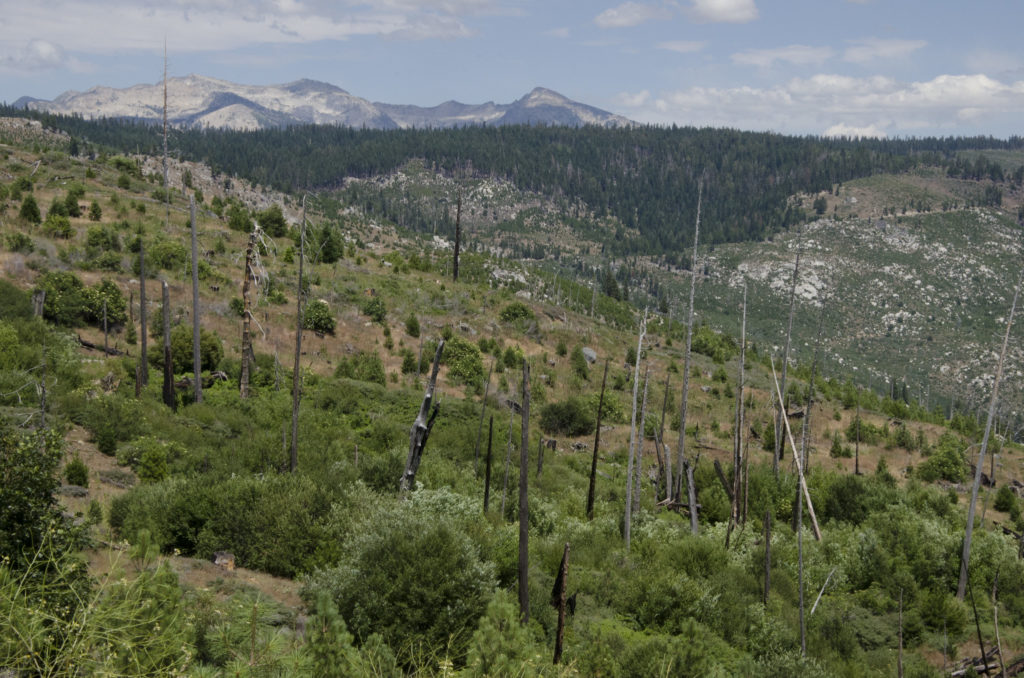By Erica Mendoza, UC Irvine, CECS Summer 2020 Intern
The Sierra Nevada’s forests play an important role in the regulation of California’s climate by absorbing and storing carbon. However, instead of capturing and storing carbon, the forests are becoming a major source through fire and forest die off. As a result, the forests are contributing to California’s greenhouse gas emissions and changing climate instead of regulating it.
The threat to California’s forests has become apparent in recent large-scale, high-severity wildfires and tree mortality events. A history of fire suppression and lack of forest management has led to the dense forests. Although current forest conditions store more carbon, they are unstable and more susceptible to fire and tree mortality. Climate change will continue to threaten California’s forests and its ability to store carbon through changing fire seasons, increased fire severity, drought, and pest outbreaks. An increase in high-severity wildfire creates a vulnerable, unstable environment for the carbon to be captured and stored. In 1fact, about 80% of the carbon storage lost from forests from 2001 to 2010 was lost through wildfire.1

California needs to safeguard the carbon stocks in Sierran forests. Management practices that promote open forests result in large, stable carbon stocks less vulnerable to catastrophic fire. The fire-prone material can be reduced by prescribed or managed fire and mechanical fuel reduction. These methods can increase carbon sequestration in stable trees in as little as 10 years.1
Proper restoration will support the ability of the forests to absorb and store the necessary carbon to maintain a balance of California’s total emissions through enhanced resistance, resilience, and response. A forest’s ability to resist threats such as fire will have other beneficial outcomes. A more resilient forest has the ability to recover from inevitable disturbances such as drought. Finally, a forest’s improved response to changes in the environment will further enhance its strength now and in the future. As a result, the stability of the forests as a carbon sink for years to come is guaranteed, reducing carbon emissions and mitigating climate change, not to mention, protecting life and property.

The Center for Ecosystem Climate Solutions (CECS) is a project focused on developing and communicating strategies to manage California’s vast forest resource and reestablish its role in the climate and in the daily lives of Californians. Amongst the many goals the CECS project has in doing so, the development of remote sensing and geospatial tools that will quantify the effects of forest management on characteristics such as carbon storage and resilience overtime is one of them. This mission of quantifying stable carbon stocks will help incentivize forest management.
This content was developed as part of the CECS Summer 2020 Science Communication Internship.

